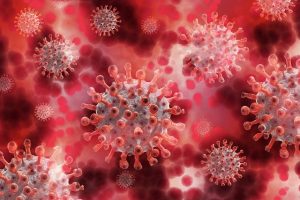Japan officially approved the discharge plan of 1.3 million tons nuclear-polluted water!
- Mifepristone: A Safe and Effective Abortion Option Amidst Controversy
- Asbestos Detected in Buildings Damaged in Ukraine: Analyzed by Japanese Company
- New Ocrevus Subcutaneous Injection Therapy Shows Promising Results in Multiple Sclerosis Treatmen
- Dutch Man Infected with COVID-19 for 613 Days Dies: Accumulating Over 50 Virus Mutations
- Engineered Soybeans with Pig Protein: A Promising Alternative or Pandora’s Dish?
- Severe Fever with Thrombocytopenia Syndrome (SFTS): A Tick-Borne Threat with High Mortality
Japan officially approved the discharge plan of 1.3 million tons nuclear-polluted water!
- Red Yeast Rice Scare Grips Japan: Over 114 Hospitalized and 5 Deaths
- Long COVID Brain Fog: Blood-Brain Barrier Damage and Persistent Inflammation
- FDA has mandated a top-level black box warning for all marketed CAR-T therapies
- Can people with high blood pressure eat peanuts?
- What is the difference between dopamine and dobutamine?
- How long can the patient live after heart stent surgery?
Japan officially approved the discharge plan of 1.3 million tons nuclear-polluted water!Expert: Bad influence will not disappear for thousands of years.
When it comes to “nuclear” discoloration, I believe that everyone knows the power of nuclear weapons and that the impact of nuclear pollution is far-reaching.
Therefore, nuclear waste generally requires special treatment, such as sealing and then deep burial.
Unexpectedly, when Japan is dealing with nuclear waste water, it intends to choose an unacceptable way, that is, it decides to discharge about 1.3 million tons of nuclear-contaminated water generated by the Fukushima Daiichi nuclear power plant into the sea.
On July 22, the Atomic Energy Regulatory Commission of Japan officially approved the plan for the discharge of nuclear polluted water from the Fukushima Daiichi Nuclear Power Plant, which has become the focus of everyone’s attention.
How is the nuclear wastewater from the Fukushima nuclear power plant produced, and in general, how should these nuclear wastewater be treated to be more secure?

Fukushima Nuclear Power Plant Nuclear Wastewater
When it comes to the Fukushima Daiichi nuclear power plant, I believe that many of my friends know a little bit about it.
What made the Fukushima Daiichi Nuclear Power Plant famous was in March 2011, when it was affected by the great earthquake in Japan, the nuclear power plant had a nuclear leak, and the cores of Units 1-3 of the Fukushima Daiichi Nuclear Power Station melted down. Units 1-6 were all permanently abandoned. A
fter this accident, in order to prevent the core from melting, the Tokyo Electric Power Company urgently injected water into the reactors of Units 1-3 to cool the cores. In this process, a large amount of nuclear waste water has also been produced. As of March last year, the amount of nuclear waste water produced has reached 1.25 million tons, and now it is increasing at a rate of 140 tons per day.
As early as April 2021, Japan planned to discharge about 130 tons of nuclear wastewater into the sea after filtering, diluting and other steps.
Although some radioactive substances in nuclear wastewater can be filtered out after filtration, there are still some radioactive substances that cannot be completely removed from nuclear wastewater.
Moreover, even after dilution, the actual total amount of emissions remains the same. Because even if the nuclear wastewater is diluted 500 times or 5,000 times, the fact that the total amount of nuclear wastewater reaches 1.3 million tons cannot be changed. Therefore, this plan was opposed by many people.
Some scientists said that if these nuclear waste water is discharged into the sea, it will not only affect the waters near Fukushima, Japan, but actually affect the global ocean.
Because the sea water is connected as a whole, under the action of strong ocean currents, these nuclear waste water will quickly spread to most of the Pacific Ocean within 57 days after discharge.
After three years, the waters of Canada and the United States will also encounter these problems. Contamination of radioactive substances, after 10 years, these radioactive substances will spread to the seas all over the world.

If nuclear waste water is really discharged into the sea, it will have a profound impact on the marine ecosystem and even human beings themselves.
Because there are countless organisms living in the ocean, they will definitely be contaminated by these radioactive substances, and finally flow into our body through the food chain. If we eat these marine fish contaminated with radioactive substances for a long time, our bodies may suffer various damages.
This is what everyone is worried about. Such effects will not disappear in a short period of time, and researchers believe that they may last for hundreds or thousands of years.
What are the treatment methods of nuclear wastewater?
Nuclear waste water contains a lot of water. Maybe some friends have this idea. Is it possible to directly electrolyze this water to generate oxygen and hydrogen.
In this way, isn’t the amount of nuclear waste water reduced? In theory, it seems to be a better method, but in practice it is difficult to achieve.
On the one hand, the process of electrolyzing water needs to consume a lot of energy, and the efficiency of electrolyzing water is also relatively low, about 60%-80%.
On the other hand, it is also the most important reason, that is, even if the nuclear wastewater is electrolyzed, the radioactivity in it cannot be eliminated, because the main pollutant in the Fukushima nuclear wastewater is tritium, which is a radioactive element.
The hydrogen produced in water is actually radioactive tritium gas, which cannot be used.
In general, electrolysis of water is not realistic at present, and the cost is quite high.
In addition to the electrolysis of water, what other ways can we treat these nuclear wastewater?
Japan has previously proposed five methods, such as discharge into the ocean, injection into the formation, hydrogen release, steam release and underground burial.
Among these methods, the difficulty and cost of discharging into the sea is relatively low, but the impact on the environment is far-reaching.
Scientists believe that the discharge of nuclear wastewater into the sea is unprecedented, and the best way to treat nuclear wastewater is The method may be to encapsulate these nuclear waste water and then bury it deeply, but the cost is relatively high.
Japan officially approved the discharge plan of 1.3 million tons nuclear-polluted water!
(source:internet, reference only)
Disclaimer of medicaltrend.org
Important Note: The information provided is for informational purposes only and should not be considered as medical advice.



